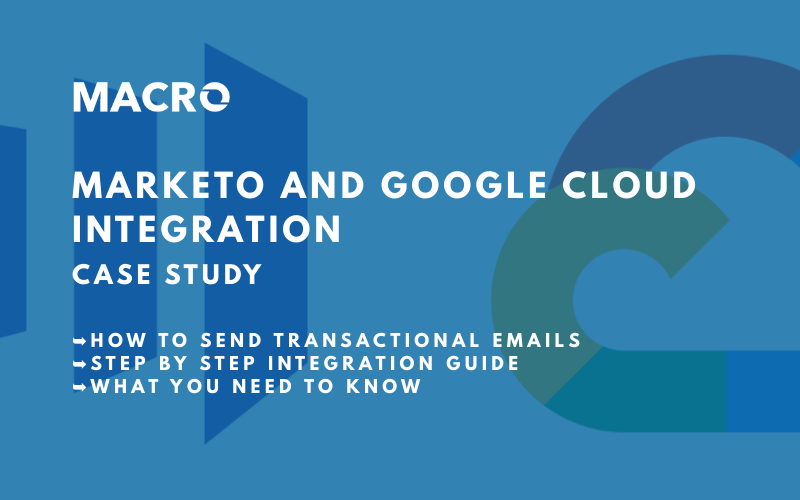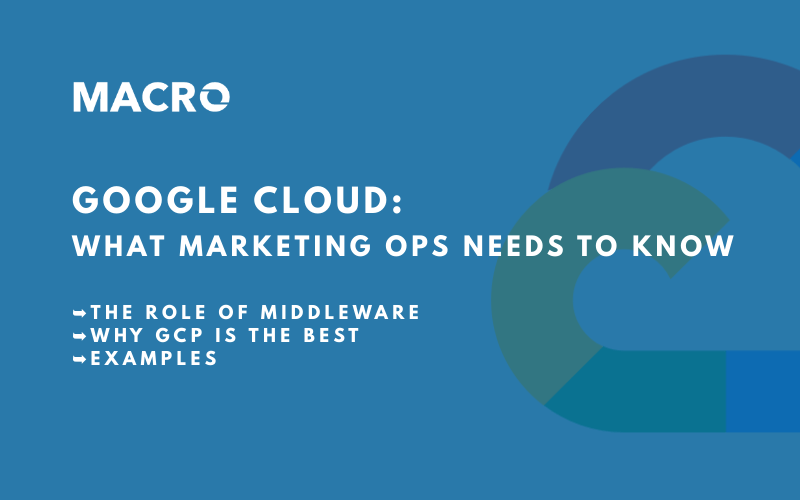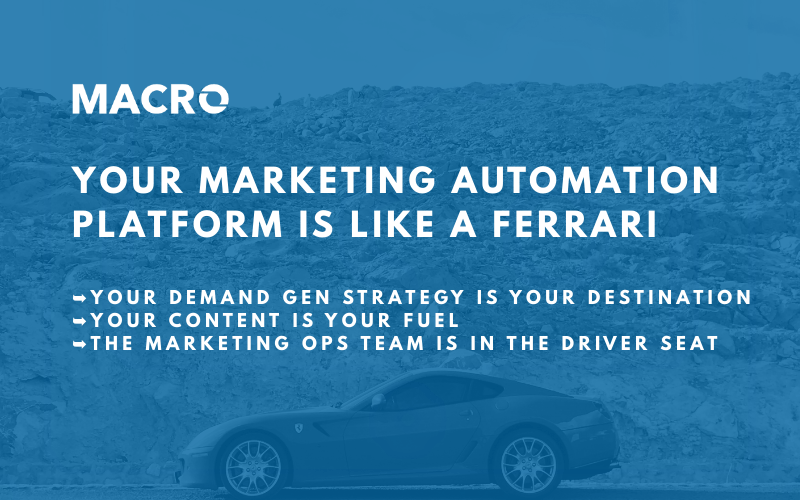
Since the Salesforce acquisition of ExactTarget and Pardot in June 2013 there has been little improvement to how Pardot reads and uses a lot of your existing Salesforce data. Just because Pardot is a tab in your Salesforce Sales Cloud it doesn’t mean all data is coming over to be used in marketing automation, you still have to manage a separate database.
At Macro Marketing Operations (MOps) Agency we are dedicated to help our clients succeed with B2B marketing so it’s our duty to look up for their best interests. We work with Pardot customers world wide, so wanted to share how the Salesforce and Pardot Integration actually works.
I can't believe in so many years Salesforce did not improve the Pardot sync
Here is what you need to know: Pardot synchs with Leads, Contacts, Accounts and Opportunities from your Salesforce Sales Cloud
| Pardot | Salesforce |
|
|
|
|
|
|
Why is this important? You'll need to double check how data fields come over every-time you add another data field. This becomes to complicated for the average marketer who just needs to get a campaign out the door. Here is a common use case: Lets say you focus on different verticals and you want to create a Vertical (vertical__c) picklist with the values Financial Services, Manufacturing and Software Development. You’ll need to do double the work in both systems and make sure they match.
Every time you need to create a new field in SFDC, you’ll need to do the exact same thing in Pardot and make sure it matches. This is called mapping custom fields.
Why is this important? Lets say you want to email everyone who is in your Financial Services vertical. That means that first time you’ll have to manually export the field values from Salesforce and import into Pardot to be able to use the values and email people accordingly. Alternatively you can also have a field value change in Salesforce which will trigger the value to come over to Pardot. This requires a gain a manual process and its very prompt to human error.
Once you do the mapping, Pardot will read the field but not the actually values of the data. Basically, it will know that you use a Vertical, but won’t know who is in what vertical until you synch the data.
Same name, different stories. Pardot Campaigns are different from Salesforce Campaigns. This has been a big confusion for a long time. Pardot Campaigns are an original source for your leads generated by forms or list imports. If you are using Salesforce Campaigns you will have to have an extra step to add Campaign Members.
Why is this important? As of September 2017, it can be quire confusing to wrap your head around these campaigns and it will make your reporting a bit challenging. Salesforce Campaigns can be used for multi-touch attribution, while a Pardot Campaign can only be used for first-touch attribution.
This is something which might be solved with the upcoming releases announced at Dreamforce 2017, but is yet to be seen how it really works.
Why is this important? If you want to launch a personalized email campaign from the respective sales rep owner, you will have manage the ownership of your records separately in Pardot. This can cause a whole lot of trouble to keep everyone’s ownership consistent between the two and you’re very prompt to manual errors.
In Salesforce your Leads, Contacts and Accounts must have an owner, who is usually someone in sales working on that prospect or client. Pardot is not able to recognize who owns that record.
Fields that map over from Lead to Contact at conversion are recognized as two different fields in Pardot. You need to check how they connect with Salesforce in two different places. Prospect and Account fields are managed differently in Pardot.
Why is this important? You need to check one field in two different places. Let say you use the Vertical Field described above. If you want to build a Dynamic List to capture prospects who are in Financial Service, you will have to use both fields. This can be very easily overlooked and you might be missing a lot of people in your campaign.
These are all on our wish list for Salesforce and Pardot integration improvements. Is it too much to ask? We look forward to your thoughts and experiences with Pardot and Salesforce. Email us at PardotExpert@macromator.com

One of our clients here at Macro is a major utility company in the United States. This is their story, challenges and the middleware solution Macro provided for them bringing together different data-points to send order confirmation emails.
Read More
Today, more than ever, companies need to use many digital marketing tools, and a key piece of the puzzle is getting different tech platforms to ‘talk’ to one another. We can achieve this with middleware. Google Cloud Platform is a newer player to the middleware game, but it is easily one of the most affordable, balanced and powerful tools available in 2020.
Read More
It would be a shame to spend a small fortune on an expensive car, only for it to sit in your garage, rarely used. This depressing story is something that happens to many modern organizations—except it’s not an expensive vehicle that they leave rusting in a garage, it’s their enterprise marketing automation platform (MAP)
Read More